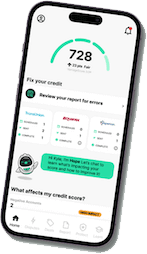Understanding a 637 Credit Score: What It Means for Your Finances

A credit score of 637 is considered fair, falling within the 580-669 range. While it may limit access to the most favorable financial products, opportunities still exist for loans and credit cards with higher interest rates. This blog explains what a 637 score means, explores loan and credit options, and offers actionable strategies to improve your score, such as paying bills on time, reducing debt, and keeping credit utilization low. With consistent effort, a 637 credit score can improve, unlocking better financial opportunities.
A credit score is a crucial factor in your financial life, determining your ability to secure loans, credit cards, and even rental agreements.
Understanding what a 637 score means, and taking the right steps to improve it, can open the door to better financial opportunities. In this article, we’ll dive into what your 637 credit score means and provide actionable steps to improve it.

What a 637 Credit Score means
A 637 credit score is considered fair, meaning you are in the 580-669 range. This score suggests that while you have a history of handling credit, you may have some areas for improvement.
Credit Opportunities for a 637 Score:
You can still access various financial products, but they may come with less favorable terms, such as higher interest rates. Lenders may view you as a moderate risk, which could result in stricter approval criteria.
Loan Options
- Auto Loans: Obtaining a car loan with a 637 score can be challenging due to higher interest rates and stricter lender requirements. Lenders that specialize in working with fair-credit borrowers might offer some options, but it’s crucial to understand your credit status to secure favorable loan terms.
- Personal Loans: Personal loans are available, especially from online lenders, though they may come with higher rates or smaller loan amounts.
Credit Card Options
- Retail Store Cards: These are easier to qualify for but usually come with high interest rates. They’re useful for limited credit-building.
- Credit Builder Cards: These are specifically designed to help people with fair or poor credit scores improve their credit. They often have lower limits and higher interest rates.
- Standard Credit Cards: Some card issuers may approve you for standard cards with low credit limits. These are often easier to qualify for but may come with higher APRs.
- Secured Credit Cards: These require a deposit as collateral, but they are a good way to improve your credit score over time. Secured cards help mitigate risk for credit card issuers by requiring an upfront security deposit, which effectively secures the credit limit.
Examples of Interest Rates and Terms
When you have a 637 score, your ability to secure credit is still possible, but the interest rates and terms may not be as favorable compared to individuals with higher scores. Here are some examples of what you might expect:
- Auto Loans: With a 637 credit score, you may qualify for an auto loan, but the interest rate could be significantly higher. For example, while someone with a score of 740 or higher might secure an auto loan at 4%, you could see rates of 10% or more. This can lead to much higher monthly payments over the life of the loan.
- Personal Loans: Personal loans are available from online lenders, but with a fair credit score, you may face interest rates ranging from 10% to 20% or higher, depending on the lender and the loan term. In contrast, someone with good or excellent credit could receive rates as low as 6% to 8%.
- Credit Cards: With a 637 credit score, you might qualify for a standard credit card, but it could come with a higher APR (e.g., 20% or more), compared to the 12-18% APR typically offered to individuals with higher credit scores. Retail store cards or credit builder cards may offer slightly lower credit limits but tend to carry even higher APRs (often 25% or more).
What Is a Credit Score?
A credit score is a three-digit number that reflects your likelihood of repaying borrowed money. It’s used by lenders to decide whether to approve you for loans, credit cards, or even renting an apartment. Credit scores usually range from 300 to 850, with higher numbers signifying greater creditworthiness.
In simple terms, it’s a snapshot of your financial trustworthiness, helping lenders gauge how risky it is to lend money to you.
How Credit Scores Are Calculated?
Credit scores are calculated using information from your report. While the exact formula varies depending on the credit scoring model used (like FICO or VantageScore), they all generally rely on similar factors. These factors include:
- Payment History: This tracks whether you’ve paid your bills on time. Missed payments, defaults, and bankruptcies can lower your credit score.
- Credit Utilization: This measures how much of your available credit you’re using. The lower the percentage, the better it looks on your score. Using a small portion of your available credit shows you’re managing debt responsibly.
- Length of Credit History: This considers how long you’ve been using credit. A longer credit history gives lenders more insight into how you manage debt, which can improve your score.
- Types of Credit Used: A diverse mix of credit accounts, like credit cards, loans, and mortgages, can boost your score by showing responsible credit management.
- Recent Credit Inquiries: Applying for new credit triggers a “hard inquiry,” where lenders review your credit report, which can temporarily lower your score. Too many recent inquiries may suggest you’re taking on more debt than you can handle, which could hurt your score.
Each of these factors is weighted differently, and the exact contribution of each factor to your score can vary.
Credit Score Ranges
Credit scores generally range from 300 to 850, with higher scores reflecting stronger creditworthiness. Here’s a breakdown of what the different ranges generally mean:
- 300 – 579 (Poor):
- At this level, it may be difficult to qualify for credit, or you may be offered credit with very high interest rates. Lenders view individuals in this range as high risk.
- 580 – 669 (Fair):
- This is considered a subprime range. You may qualify for some credit, but at higher interest rates. Lenders may see you as a moderate risk.
- 670 – 739 (Good):
- This is a solid range. People in this range typically qualify for credit at standard interest rates, and lenders see them as low risk.
- 740 – 799 (Very Good):
- A score in this range is excellent and indicates strong creditworthiness. You’ll likely qualify for the best interest rates and favorable terms from lenders.
- 800 – 850 (Excellent):
- This is the top range, showing exceptional credit management. People with scores in this range are viewed as very trustworthy borrowers and usually qualify for the best loan and credit card offers.
It is also important to consider average credit scores, which provide a benchmark for comparing individual scores. For instance, knowing the average credit scores in Canada and its cities can help you understand where you stand and what you might need to improve to reach or exceed these averages.
Each lender may have slightly different criteria, but in general, the higher your credit score, the better your chances of receiving favorable terms on loans, credit cards, and other financial products.
Understanding Your Report
A credit report is a comprehensive record of your credit history, including accounts, payment behavior, and credit inquiries. Understanding your report is essential to managing your credit effectively and improving your credit score.
Components of a Credit Report
A credit report typically includes the following components:
- Personal Information: This section includes your name, address, date of birth, and Social Security number. It’s crucial to ensure that all personal information is accurate to avoid any potential issues.
- Credit Accounts: Here, you’ll find a list of your credit accounts, such as credit cards, loans, and mortgages. Each account will show details like the account type, credit limit, current balance, and payment history.
- Payment History: This typically appears directly under each individual account. This is a record of your payment history, including on-time payments, late payments, and missed payments. Since payment history is a significant factor in your credit score, it’s important to keep this section clean.
- Credit Inquiries: This section lists all the credit inquiries made by lenders and creditors. Credit inquiries come in two types: hard inquiries, which may impact your credit score, and soft inquiries, which have no effect.
- Public Records: Information about bankruptcies, foreclosures, and other public records will appear here. These can have a substantial negative impact on your credit score.
How to Improve a 637 Credit Score
Improving a 637 credit score is achievable with dedication and smart financial habits. Here are some strategies to help you improve your score:
Pay Bills on Time
Your payment history is the most significant factor in your credit score. Late or missed payments can have a substantial impact, accounting for about 35% of the overall score. Make sure to pay all your bills on time, including credit cards, loans, utilities, and even subscriptions. Setting up automatic payments or reminders can help you stay on track.
Reduce Outstanding Debt
Pay down existing debt, especially high-interest credit card balances. This not only helps lower your debt-to-income ratio but also improves your credit utilization rate. Aim to keep your credit utilization below 30%, ideally around 10-20%, to show you can manage your credit responsibly.
Keep Credit Utilization Low
Credit utilization is the percentage of available credit you’re using. For example, if you have a $1,000 limit on a credit card and carry a $300 balance, your utilization is 30%. It’s better to keep balances low relative to your credit limits, ideally under 30%, to show you aren’t over-relying on credit.
Make More Than the Minimum Payment
If you can, always aim to pay more than the minimum payment on your credit cards. This reduces your overall debt faster and shows lenders you’re managing credit wisely. Paying off your balance in full each month is ideal.
Avoid New Credit Applications
Applying for new credit triggers a hard inquiry, which can temporarily decrease your credit score. Avoid applying for new credit unless necessary. Opening new accounts too frequently can make you appear financially irresponsible.
Regularly Check Your Credit
Errors on your credit can negatively affect your score. Check your credit regularly for any inaccuracies and dispute any errors with the credit bureaus. This ensures your score accurately reflects your credit history.
Set Up Credit Alerts
Credit alerts notify you when significant changes occur on your report, such as new inquiries, account updates, or balance changes. Setting up credit alerts through services like your credit card issuer or through credit bureaus can help you stay on top of your credit activity, ensuring that any fraudulent or unauthorized activity is caught early and addressed.
Become an Authorized User
If you have a reliable family member or friend with a good credit history, you might ask them to add you as an authorized user on their credit card. As an authorized user, you’ll benefit from their positive payment history and potentially improve your credit score. Just ensure that the primary user has a good record of on-time payments, as any negative behavior can affect your credit.
Borrowing to Build
If you don’t have much credit history, consider opening a secured credit card or a credit builder loan. These products are designed for people looking to build or rebuild their credit. Make sure to use them responsibly by keeping balances low and paying on time.
By consistently practicing these strategies, your 637 credit score can improve over time, opening the door to better financial opportunities and lower interest rates.
Managing Debt with a 637 Credit Score
Managing debt with a 637 credit score requires careful planning and strategy. Here are some tips to help you manage your debt effectively:
Debt Consolidation Options
Debt consolidation can be a useful strategy for managing debt with a 637 credit score. Here are some debt consolidation options to consider:
- Balance Transfer Credit Cards: If you have good credit, you may be able to transfer your high-interest debt to a balance transfer credit card with a lower interest rate. This can help you save on interest and pay off your debt faster.
- Personal Loans: A personal loan can be used to consolidate debt and simplify your payments. By combining multiple debts into a single loan with a fixed interest rate, you can make your debt more manageable.
- Credit Counseling: Non-profit credit counseling agencies can help you develop a plan to manage your debt and improve your credit score. They can provide guidance on budgeting, debt repayment, and credit management.
- Debt Management Plans: A debt management plan can help you negotiate with creditors and reduce your debt payments. These plans are typically offered by credit counseling agencies and can help you get back on track with your finances.
By exploring these debt consolidation options and implementing effective debt management strategies, you can work towards improving your 637 credit score and achieving better financial health.
How to Dispute Your Credit
Disputing errors on your credit is a key step in repairing your credit and improving your credit score. By identifying inaccuracies and correcting them, you can ensure that your report reflects accurate and up-to-date information.
Here’s how you can dispute errors and fix your credit report:
Obtain and Review Your Credit Reports
Begin by obtaining a copy of your credit report from all three major credit bureaus: Equifax, Experian, and TransUnion. You can get a free report from each bureau once a year at AnnualCreditReport.com. Review your reports for errors or discrepancies, such as:
- Incorrect personal information (e.g., wrong name or address)
- Accounts that don’t belong to you
- Incorrect payment statuses (like late payments that were paid on time)
- Accounts that were paid off but are still showing as outstanding
- Duplicate listings of the same debt
Dispute the Error with the Credit Bureau
You can dispute errors using a credit repair company or directly with the credit bureaus yourself. Here’s how:
- Online: The easiest way to dispute errors is to do it online. Each credit bureau offers an online dispute process:
- Equifax: Visit the Equifax website and use their online dispute form.
- Experian: Use the Experian website’s dispute center to file a dispute.
- TransUnion: Visit the TransUnion website and follow their instructions to dispute inaccuracies.
- By Mail: If you prefer to dispute by mail, send a letter to each credit bureau outlining the errors, including copies of your supporting documentation. It’s best to use certified mail for tracking purposes.
- By Phone: Some bureaus allow disputes by phone, but it’s generally better to do it in writing for a paper trail.
Provide Specific Details in Your Dispute
Be clear and specific in your dispute. Include:
- Your full name, address, and date of birth
- The account or item you’re disputing
- A brief explanation of why the information is incorrect
- Any supporting documentation (such as payment confirmations or statements)
Wait for the Investigation
Once the credit bureau receives your dispute, they have 30 days to investigate the issue. They’ll contact the creditor or company that reported the information to verify its accuracy. If the creditor can’t verify the information, the bureau is required to remove it from your credit report.
Review the Outcome
After the investigation is complete, the credit bureau will send you the results of your dispute. If the information is found to be incorrect, the bureau will update your report accordingly. If the dispute is not successful, you can try disputing again with additional evidence or escalate the issue with the creditor directly.
Check Your Credit Reports Again
Once the dispute process is complete, obtain another copy of your credit report to verify that the error was corrected. You can get another free report from AnnualCreditReport.com or directly from the credit bureaus.

How Dovly AI Can Help
Dovly AI offers a smarter way to manage and improve your credit. With automated credit repair services, Dovly helps identify negative items on your credit report and works to resolve them. The platform continuously monitors your credit and disputes inaccuracies on your behalf, saving you time and effort.
Dovly also provides personalized credit insights that guide you toward better credit health, offering recommendations on how to improve your score, reduce debt, and manage your finances more effectively. Whether you’re looking to dispute errors or make strategic moves to improve your credit, Dovly can help you get on the path to better credit faster.
Conclusion
Improving your 637 credit score is not only possible, but it can also unlock better financial opportunities, lower interest rates, and access to a wider range of credit products. By focusing on responsible credit habits, such as paying bills on time, reducing debt, and disputing errors on your credit report, you can steadily raise your score.
If you’re looking for a smarter and more efficient way to manage and improve your credit, Dovly AI offers automated services that help identify and dispute negative items on your credit report. Enroll today to start your journey towards better credit health and a brighter financial future.
Frequently Asked Questions



